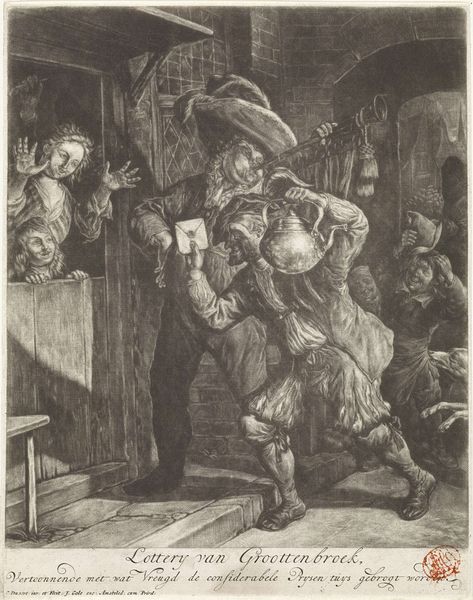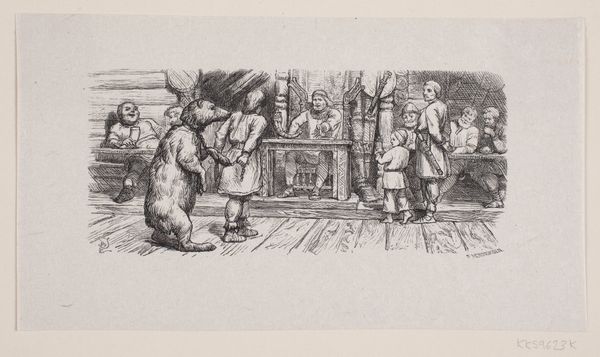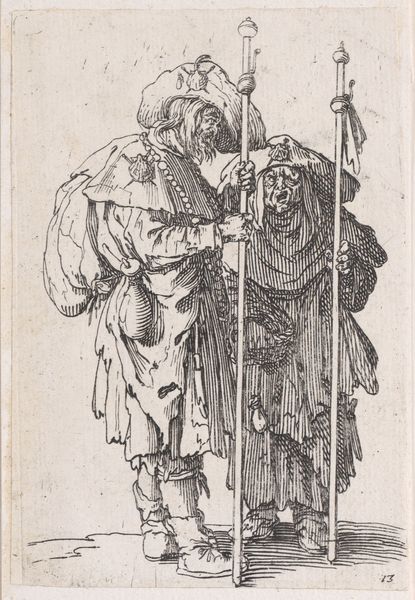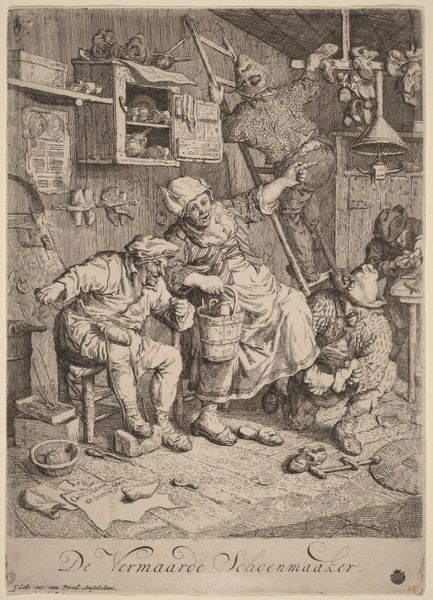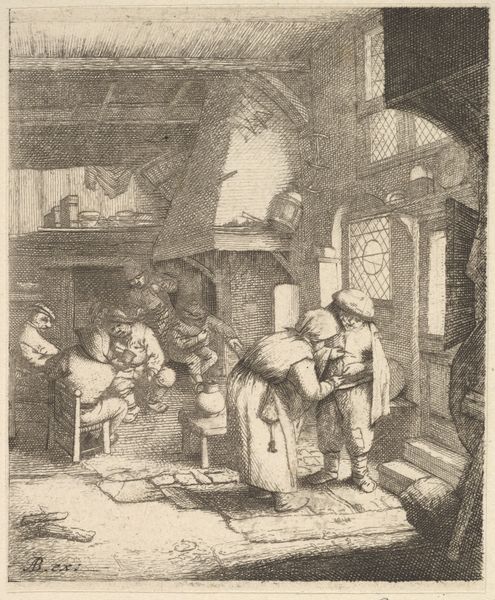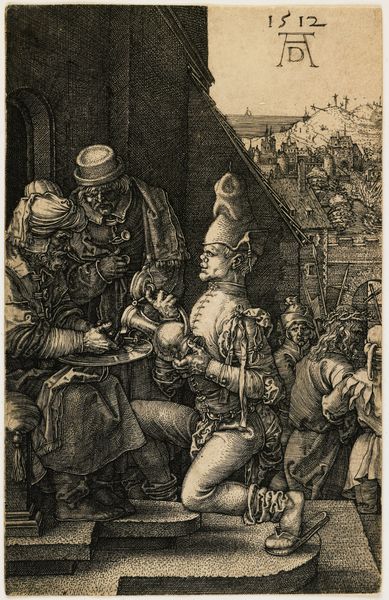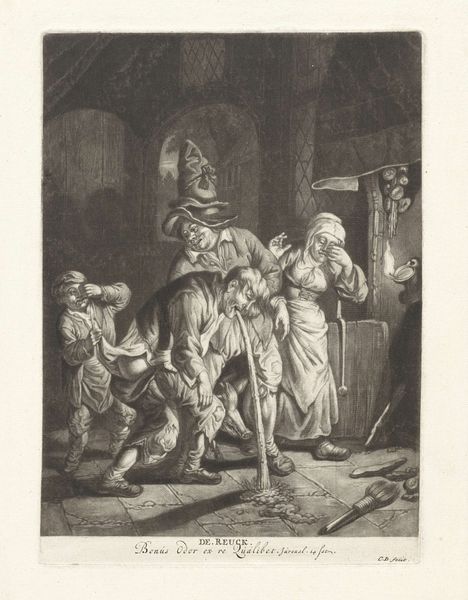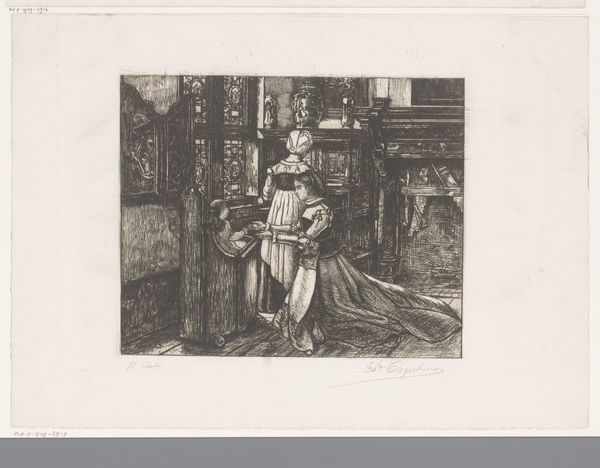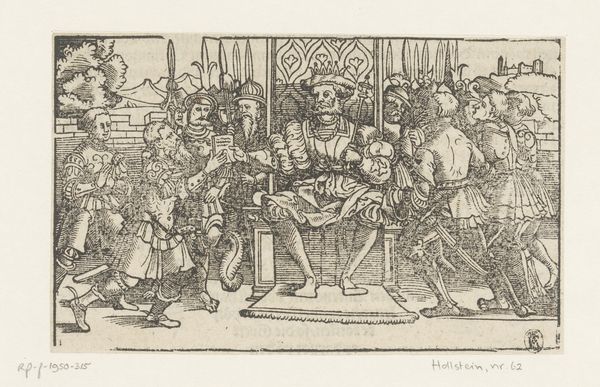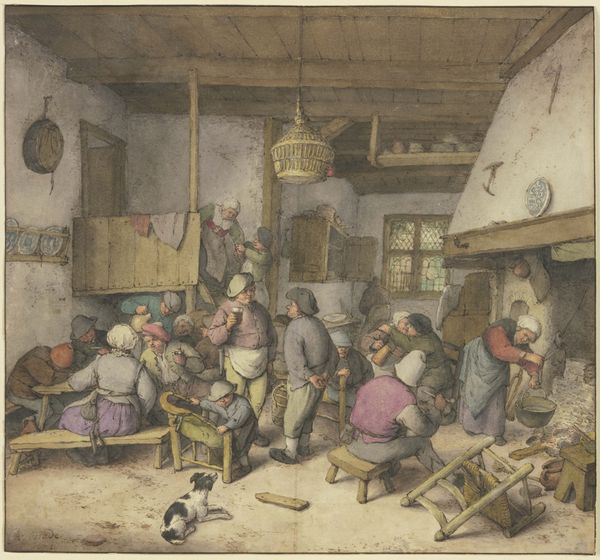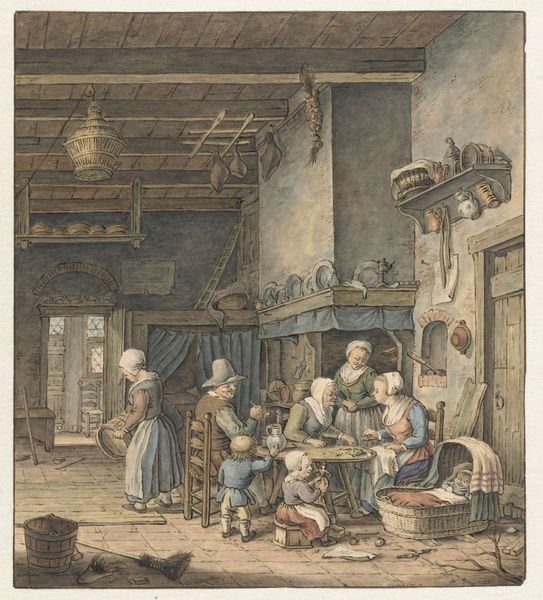
drawing, textile, paper, ink
#
drawing
#
medieval
#
narrative-art
#
textile
#
paper
#
ink
#
folk-art
#
geometric
#
mythology
#
russian-avant-garde
#
textile design
Copyright: Public domain
Curator: Looking at Ivan Bilibin's "Illustration for Alexander Pushkin's 'Fairytale of the Tsar Saltan'," I'm immediately struck by how decorative it is, like a scene embroidered onto heavy cloth. What jumps out to you? Editor: The textures! Oh, my word, it is swimming in them. From the geometric mosaics of the tiled floor, all the way to those mind-bogglingly elaborate robes – it's practically a tactile explosion. You just want to run your hand over all those paisley swirls, but also admire how such intricate detailing had to involve textile and material arts from across the Russian empires' material cultures, likely informed and derived by foreign merchants and suppliers. Curator: Bilibin worked intensely to capture the spirit of old Russia, even adopting a stylized 'medieval' aesthetic to reflect its folktales. Those textiles you pointed out certainly ground us in a world of tangible, crafted objects and the narrative as artifact. To me, the colors have this strange weightlessness... What effect do they have on your appreciation of labor and material processes? Editor: They simultaneously pull me in and keep me at a distance. The limited palette flattens everything, emphasizing surface over depth. This might abstract our perception, but then I am all the more drawn back to reflect on what this flattening conceals of its materials, like obscuring their origins to produce cultural identity. In flattening depth of image, Bilibin amplifies cultural meaning, yet the materials may have origins elsewhere. What do you think it adds to the mythical mood it seeks to produce, by drawing upon labor of material origins? Curator: The flattening serves the purpose of bringing forward what's inherently illustrative: the characters are, literally and figuratively, types. They're recognizable figures within the tale and almost exist to reinforce their symbolic meaning. A bit like a theatrical scrim. Editor: It reminds me of traditional woodblock prints, but with this very precise, almost industrial crispness to the lines. Curator: Ultimately it brings forward its identity as a drawing, made of ink on paper—we know this even while being enchanted with old-world beauty. The man knew his craft and the visual culture it needed to connect with! I can almost feel Pushkin's breath whispering through. Editor: It's an artifact layered upon layers of craftsmanship and cultural aspirations. It leaves you wondering just how far back the production chain stretches to achieve an image seemingly so removed from such considerations.
Comments
No comments
Be the first to comment and join the conversation on the ultimate creative platform.
